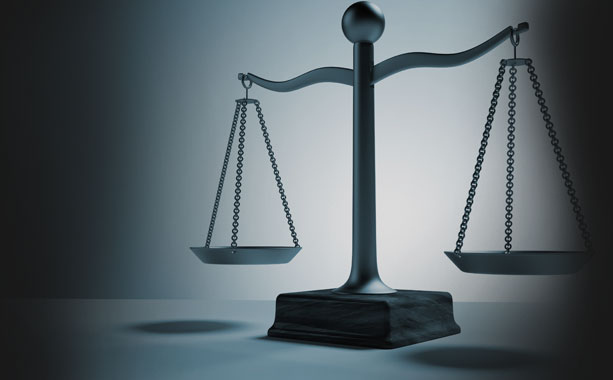This is the full version of the posting at the Attorney at Law Magazine site in which the last paragraph was truncated, mutilating the article:
The Math of Judging and the Myth of the Precedent
Lev Tsitrin
To a layman, the notion of precedent makes perfect sense. If a similar case was already decided, why waste the time on reinventing the wheel? Why not apply the existing, cookie-cutter solution to a cookie-cutter dispute?
Those who have seen how judging is done should be less sanguine. There are three kinds of judicial decisions, after all – rightful, wrongful, and fraudulent. Shouldn’t the method of decision-making have an impact on whether a case sets a precedent?
A trial being a fight between a plaintiff and a defendant (which is why court cases are titled using names of the contestants, on the Plaintiff v. Defendant pattern), Plaintiff and Defendant beat each other in court with their respective factual and legal argument. Once this exchange of lawyerly blows has been completed, parties’ argument goes to the judge who announces the winner.
How is the winner determined? The images of Lady Justice – blindfolded and holding a scale, one tray for plaintiff’s argument, the other for defendant’s; the set, predefined manner of the exchange of parties’ argument; the assurances of judges that (as judge Roberts put it during his confirmation) judges neither pitch nor bat but only call balls and strikes, or, per judge Kavanaugh, that judge is merely an umpire, all assure us that the judge puts plaintiff’s argument on one tray of Justice’ scale, defendant’s on the other, than checks which way the scale moved, and writes up that movement of the scale into the decision. For instance, if Plaintiff provided 100 worth of argument and the Defendant only 10, Plaintiff v. Defendant will be decided for the Plaintiff – because 100 is greater than 10. Makes sense?
It does; in that instance the case has been decided “rightly.” But we also hear that sometimes a case may be decided “wrongly.” After all, we are told, it is only human to err, and since a judge is merely a human, he may conclude that 10 is greater than 100, thus “wrongly” deciding the case for the Defendant, and sending the Plaintiff, fuming with rage at judge’s ignorance of the basic math, to the appellate court.
But deciding “rightly” and “wrongly” are not the only options. The judge may want to decide for the Defendant despite Defendant’s obviously weaker argument but, unwilling to decide the case “wrongly” so as not to look stupid to appellate judges and make them wonder why he does not know that 10 is less than 100, the judge would add to Defendant’s tray judge’s own, “sua sponte,” 200 worth of argument, thus claiming Defendant’s victory as “rightful,” with a score of 100-to-210. Or, alternatively, the judge may remove Plaintiff’s argument from his tray of the scale of justice, declaring Defendants’ win with a score of 0-to-10.
This procedure, in either of its two variants (or in their combination) is the third, fraudulent, way to decide the case, an illegal way because in it a judge becomes a party to the case argued before him, acting as a lawyer to the party he wants to win, in clear violation of the Constitutional guarantee of “due process of the law” which demands that a judge must be impartial, recusing himself when he is a party to the case.
So what do those three ways of judging, “right,” “wrong,” and “fraudulent” do to the notion of the precedent?
Well, they obviously divide all potential precedents into three corresponding categories, “right,” “wrong,” and “fraudulent,” complicating matters and making a precedent meaningless unless the category to which it belongs is clarified. (I suspect that in practice there are only two kinds, the “right” and the “fraudulent.” I very much doubt that a judge would consciously issue a “wrong” decision – which would expose him to ridicule as an ignoramus. He’d rather mask it with “sua sponte,” fraudulent argument – thus converting a “wrong” decision into a “fraudulent” one. So for simplicity’s sake I will only discuss the precedents that result from “rightful” and “fraudulent” judging.)
In a “rightful” precedent (that stems from a rightly-decided case), there isn’t much to discuss. It is perfectly valid as a cookie-cutter decision in a similar, cookie-cutter case.
Matters are, in a way, as simple with fraudulently-decided cases. By injecting himself into the case as its lawyer, the judge becomes a party to it, and alters its very nature. From being a Plaintiff v. Defendant, the case turns either into Plaintiff v. Defendant & Judge when the first mode of fraudulent judging is used – that of adding argument to defendant’s tray, or into Not Plaintiff v. Defendant & Judge when judge empties the plaintiff’s tray of its argument. As mentioned, those two methods of fraudulent, “sua sponte” judging can be combined, too; what’s important, is that the case filed by the Plaintiff – Plaintiff v. Defendant stays un-adjudicated; hence, no precedent can possibly stem from it.
Because a case decided by judge’s “sua sponte” argument cannot set precedent, potentially precedential cases have to be first examined for the presence of “sua sponte” argument in the decision – irrespective of whether it adds argument to, or removes it from, parties’ argument. The cascading nature of the precedent should also be taken into account, to make sure that the ostensibly “rightly” decided case does not rest on the precedent from a fraudulently-decided one. In a word, a comprehensive clean-up of cases is needed, to remove from the list of precedents those cases that were either themselves decided by adjudicating “sua sponte” argument, or were based on such decisions.
Here is a practical example. A guy walks into your law office, explaining that he is a writer and, since no one wants to publish his book, he tried to publish it himself but bumped into the obstacle he wants you to remove. The Library of Congress assigns upcoming books their subject-matter keywords that make a book visible in the “marketplace of ideas” of bookstores and libraries and are used by them for placing orders. Yet the Library denies those keywords to author-publishers like him, giving them only to third-party, corporate publishers. His ideas are excluded from the “marketplace of ideas,” he claims. The guy wants you to sue the Library of Congress for engaging in crony capitalism by limiting the market to books published by corporations, and for violating his speech rights, turning corporations into censors of books. You realize that he is right – speech being a communication between a speaker and the audience, abridgment of audience is a clear-cut abridgement of speech – which is forbidden to the Library because it is a government institution. You think you have a case – but you quickly discover that the issue was already adjudicated in Overview Books v. US by two judges, Lettow in the Court of Federal Claims, and Vitaliano in the Eastern district court of New York, and both decided it for the US. This “precedent” stops you in your tracks. But look under the hood of the decision, not just at it, and you will see that the case (which I know very well because I was the plaintiff) was decided fraudulently, and therefore did not set a precedent. If you read parties’ argument and compare it to decisions, you’ll plainly see “sua spontism” used both to add to government’s, and to remove from Overview Book’s argument. What was decided, was Overview Books v. US & Lettow and Not Overview Books v. US & Vitaliano. Those two cases were never filed, so they don’t count as precedent. The case that would have counted, Overview Books v. US, was never decided because the 100 of the argument of Overview Books was never impartially weighed by the “umpire,” neither-pitching-nor-batting, Lady-Justice-like judges against the mere 10 of the counter-argument offered by the US. The judges were governments’ lawyers first, judges afterwards. Lettow augmented the government’s 10 with 200 of his own, “sua sponte” argument; Vitaliano discarded Overview Books’ argument, reducing it to 0.
Bottom line – does a precedent have value? It does – but it better be a “right” precedent, not a “fraudulent” one – which is no precedent at all.
Lev Tsitrin is the author of pseudonymously published “The Pitfall of Truth: Holy War, its Rationale and Folly” and founder of Coalition Against Judicial Fraud


Yes, Precedent, when it doesn’t comply with the goals of a jurist is simply ignored. I’ve seen even lack of personal or subject matter jurisdiction ignored and a victim imprisoned after a void conviction entered in the absence of any and all jurisdiction. Appeals don’t magically follow precedent either.